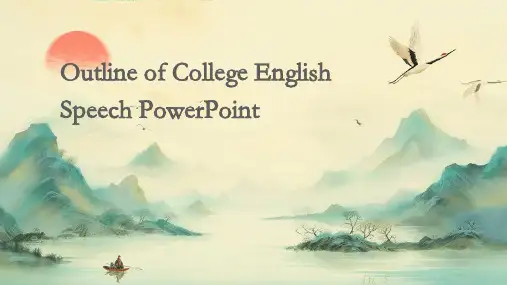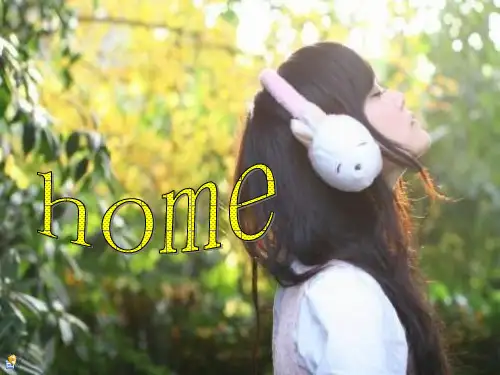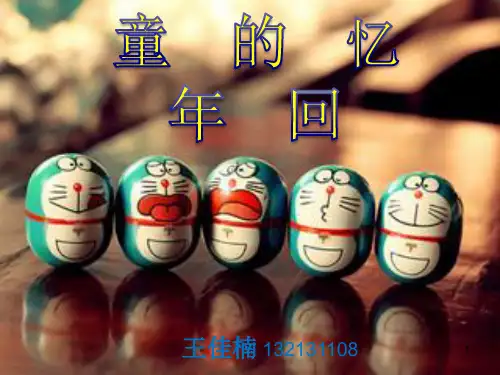大学英语课堂演讲ppt
- 格式:ppt
- 大小:5.36 MB
- 文档页数:16



大学生英语演讲pptA Scene to RememberGu QiubeiShanghai International Studies UniversityAdvisor: Gong Longsheng Good afternoon, ladies and gentlemen. Today I would like to begin with a story. There was once a physical 1) therapist who traveled all the way from America to Africa to do a 2) census about mountain 3) gorillas. These gorillas are a main attraction to tourists from all over the world; this put them severely under threat of 4) poaching and being put into the zoo. She went there out of curiosity, but what she saw strengthened her determination to devote her whole life to fighting for those beautiful creatures. She witnessed a scene, a scene taking us to a place we never imaged we’ve ever been, where in the very depth of the African rainforest, surrounded by trees, flowers and butterflies, the mother gorillas 5) cuddled their babies. Yes, that’s a memorable scene in one of my favorite movies, called Gorillas in the Mist, based on a true story of Mrs. Dian Fossey, who spent most of bet lifetime in Rwanda to protect the ecoenvironment there until the very end of her life. To me, the movie not only presents anunforgettable scene but also acts as a 6) timelereminder that we should not develop the tourist industry at the cost of our ecoenvironment. Today, we live in a world of prosperity but still threatened by so many new problems. On the one hand, tourism, as one of the most promising industries in the 21st century, provides people with the great opportunity to see everything there is to see and to go any place there is to go. It has become a lifestyle for some people, and has turned out to be the driving force in GDP growth. It has the magic to turn a backward town into a wonderland of prosperity. But on the other hand, many problems can occur---natural scen es aren’t natural anymore. Deforestation to heat lodges is devastating Nepal. Oil spills from tourist boats are polluting Antarctica. Tribal people are forsaking their native music and dreto listen to U2 on Walkman and wear Nike and Reeboks. All these 7) appalling(令人震惊的) facts have brought us to the realization that we can no longer stand by and do nothing, because the very thought of it has been 8) eroding(侵蚀) our resources. Encouragingly, the explosive growth of global travelhas put tourism again in the spotlight, which is why the United Nations has made 2002 the year of ecotourism, for the first time to bring to the world’s attention the benefits of tourism, but also its capacity to destroy our ecoenvironment. Now every year, many local ecoenvironmental protection organizations an: receiving donations--big notes, small notes or even coins--from housewives, 9) plumbers(水管工人), ambulance drivers, salesmen, teachers, children and 10) invalids(残疾人), Some of them can not afford to send the money but they do. These are the ones who drive the cabs, who nurse in hospitals, who are suffering from ecological damage in their neighborhood. Why? Because they care. Because they still want their Mother Nature back. Because they know it still belongs to them. This kind of feeling that I have, ladies and gentlemen, is when it feels like it, smells like it, and looks like it, it’s all comi ng from a scene to remember, a scene to recall and to cherish. The other night, as l saw the moon linger over the land and before it was sent into the invisible, my mind was filled with songs. I found myself humming softly, not to the music, but to some-thing else, someplace else. a place remembered, a place untouched, a field of grawhere no one seem to have been except the deer. And all those unforgettable scenes strengthened the feeling that it’s lime for us to do something, for our own and our coming generation. Once again, I have come to think of Mrs. Dian Fossey be- cause it’s with her spirit, passion, courage and strong sense of our ecoenvironment that we are taking our next step into the world. And no matter who we are, what we do and where we go, in our mind, there’s always a scene to remember, a scene worth our effort to protect it and fight for it. Thank you very much.。




⼤学英语说课讲稿课件PPT⼤学英语说课讲稿课件PPT ⼤学英语说课讲稿课件PPT ⼀、Introduction(导⾔) 英语说课是英语教学中的重要⼀环,也是衡量⼀位英语教师对教材的把握、分析及教师本⼈对上课进程的宏观控制能⼒的有⼒⼿段,能从理论上指导教师贯彻教学⼤纲,真正做到教与学相结合,将教材、⼤纲、教师、学⽣、课堂融为有机整体,对不断提⾼教师教学能⼒和教研能⼒,有着突出的作⽤。
⼆、说课的基本原则 1. 遵循教学⼤纲要求,明确说课内容。
把握说课与上课的区别与联系,正确理解教材、教案说课、上课之间的层进关系,⾛出说课即是“说教案”的`误区。
2. 以教师为主导,学⽣为主体,体现先进的教学理念。
3. 详略得当,重点突出,体现说课的完整性。
4. 与教案相结合,体现其可操作性。
三、说课的基本程序 1. 说教材:科学分析教材,明确重点难点、教学⺫标和要求以及教材在单元中的地位和作⽤。
2. 说学⽣:谈谈学⽣的知识与能⼒结构,明确说课内容的难易程度。
3. 说教法:谈谈本节课要实施的教学⼿段、⽅法以及教具的使⽤。
4. 说学法:谈谈学习⽅法的运⽤以及将要实现的⺫标。
5. 说教学程序:说为什么要设计该程序?⺫的、意图何在?结果如何? 6. 说板书设计:谈谈板书设计的根据和理由,⼒求体现说板书设计的程序性、概括性和艺术性。
四、注重说课信息和反馈与总结 说课的对象可以是专家、同⾏甚⾄是学⽣。
向说课对象征询意⻅、获取信息,⼒求不断改进和提⾼。
五、附SB 2B U16 Lesson 63说课稿 Unit 16 Lesson 63 Hello, everyone. Today I’m very pleased to have an opportunity to talk about some of my teaching ideas. My topic is life in the oceans taken from Lesson 63 of Unit 16 in SEFC(2). It is made up of four parts. The analysis of the teaching material: This lesson is a reading passage. It plays a very important part in the English teaching of this unit. Lesson 62 and Lesson 63 are a whole unit. By studying Lesson 63, Ss can improve their reading ability, learn more about the sea and the life in the oceans. At the same time, we should get thestudents to understand some difficult sentences to comprehend the passage better. The Ss should do some listening, speaking and writing, too. Of course, the Ss should receive some moral education. Let the Ss understand the sea better, love the sea and save the sea and the life of the sea. Teaching aims: 1. Knowledge aim: Understand the main idea of the text. 2. Ability aim: Retell the text in their own words. 3. Emotional aim: Make the Ss love the life of the sea and do something to stop it being polluted. Key points / Teaching important points: How to understand the text better. Teaching difficult points: 1. Use your own words to retell the text. 2. Discuss the pollution of the sea and how to save the sea. Something about the Ss: 1. The Ss have known something about the sea and sea life through the Internet and other ways. 2. They are lack of vocabulary. 3. They don’t often use English to express themselves and communicate with others. 4. Some Ss are not active in the class because they are afraid of making mistakes. Before dealing with this lesson, I’ll do my best to carry out the following theories: Make the Ss the real masters in class while the teacher himself acts as director; Combine the language structures with the language functions; Let the students receive some moral education while they are learning the English language. Teaching method: Double activities teaching method Question-and-answer activity teaching method Watch-and-listen activity Free discussion method Pair work or individual work method Teaching aids: 1. a projector 2. a tape recorder 3. multimedia 4. the blackboard I have designed the following steps to train their ability of listening, speaking, reading and writing,especially reading ability. The entire steps are: Greetings, Revision, Lead-in and preparation for reading, Fast reading(scanning), Listening, Intensive reading, Preparation for details of the text, Consolidation, Discussion, Homework Step 1 Greetings Greet the whole class as usual. Step 2. Revision 1. Ask students some questions to revise the last lesson(show them on the screen).a. How much salt do the oceans contain per thousand parts of water?(35 parts of salt. 3.5% by weight)b. What is coral? Why are corals not found in deep water? c. Why is the Dead Sea called the Dead Sea? 2. Check the homework(made a survey about the sea or sea life by surfing the Internet or asking for help from other people). Through this part we can consolidate what they studied yesterday, communicate with others about their survery results and prepare for the new lesson. Step 3. Lead-in and preparation for reading Show them some pictures and let them talk each other, and then use the pictures about sea and life in the oceans to learn new words, for example, Antarctica, huge whale, sperm whale, squid and so on. Purpose: Arouse the students’ interest of study. Bring in new subject: Life in the oceans. Step 4. Fast reading Read the passage as quickly as they can. I show the questions on the screen and let them get the main idea of each paragraph: 1. Why can living things live in such oceans around the Antarctica? 2. What does the whale feed on? 3. What is the difference between the sperm whale and other whales? Method: Read the text individually, use question—and—answer activity. Purpose: Improve the students’ reading ability. Understand the general idea of each paragraph. Step 5. Listening(book closed) 1. Listen to the tape then do an exercise(wb page 90, part 1) 2. True or false exercise.(on the screen) Train the Ss’ listening ability and prepare for later exercises. Step 6. Intensive reading Read the passage carefully again and answer some detailed questions on the screen. 1. How much does a whale eat at a time? 2. Do all the whales feed on small fish? 3. How deep can a sperm whale dive? It is also called depth reading or study reading. It means reading for detailed information. Purpose: Further understand the text (Train further reading ability) to find out some different sentences and details of the text. Step 7. Preparation for details of the text on the screen 1. ...its heart slows to half its normal speed. slow-v. to become / make slower. 2. ing sound wave Present participle used as adverbial. 3. provide sth. for sb. provide sb. with sth. 4. at a time: each time 5. grow to a length of... Purpose: Train the Ss’ ability of understanding and using laguage. Step 8. Consolidation 1. Find out the topic sentences. 2. Retell the passage according to the topic sentences. Purpose: I want to know if my students understand the whole text really and if they master what I mean to tell them in this class. What’s more, I want to let them have the ability of introducing and analyzing expression. At the same time, I will write down the topic sentences on the blackboard according to what the students find, so they can retell it easily. Step 9. Discussion Show them some pictures about the polluted sea and many living things which are in danger and ask them: What are their opinions about it? In order to let them have free choice, I give them another topic: The sea is being polluted. What should they do? Purpose: I mean to give them emotional education. I give them multi-media pictures to arouse their interest of study and their love for life. I mean to make them realize: The sea is in danger! I teach them to do their best to help it and do something from now on. Everyone should do something to love and protect our home. Step 10. Homework Write an article Saving the sea. I want to improve the ability of their writing. At the same time, train the ability of do-it-yourself and looking up the information by themseleves. Unit 16 Lesson 63 Topic Sentences: 1. Some living things can live in Antarctica.(what) 2. The whale feeds on small fish.(what) 3. The sperm whale feeds on squid.(difference) Discussion: 1. The whales are in danger. What’s your opinion about it? 2. The sea is being polluted. What should we do? In my opinion, the blackboard design can reflect the teacher’s ability of mastering the text and leading the students to master the text easily. In this text, the design is not easy to write. I write the topic sentences on the blackboard in order to tell the students that this is of the importance in this class. The discussion is of the difficulty. I want to make the design inductive, instructive and artistic.。



